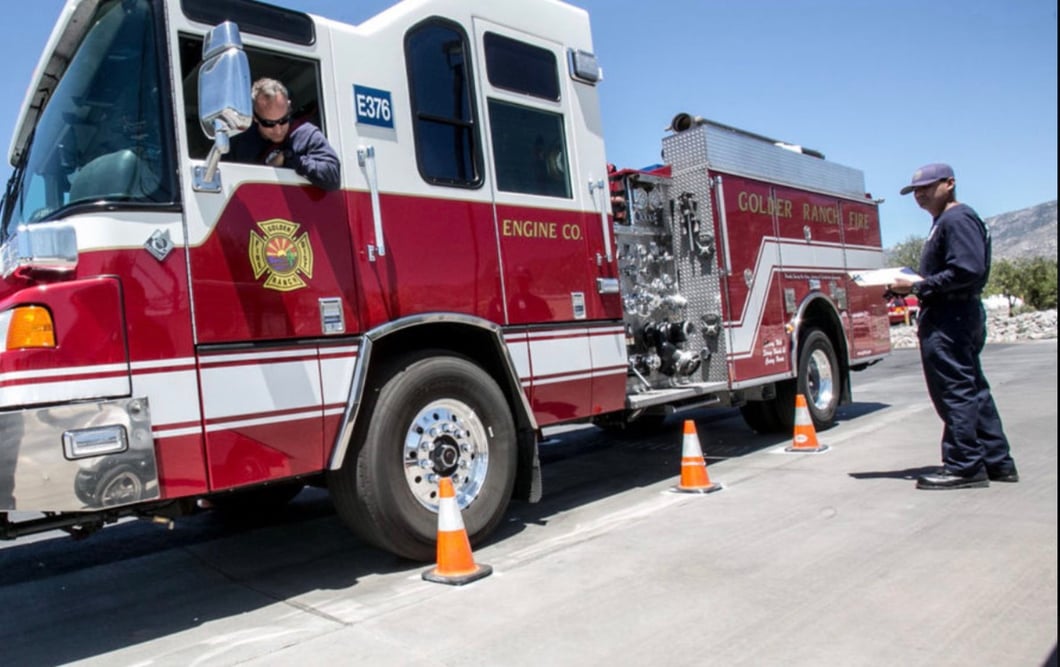4 Must-have Data Points for Dispatch-Billing Alignment and Maximum Reimbursement
Struggling to Find Funding for Your EMS Agency? Apply for a Grant
Many of us in the fire and emergency medical service (EMS) industry are familiar with the process of searching for a funding source once a need has been identified
Was this information valuable?

Many of us in the fire and emergency medical service (EMS) industry are familiar with the process of searching for a funding source once a need has been identified. In an ideal world, all of us would have the budget capacity available to meet each goal every fiscal year. In reality, each agency must carefully weigh where to invest budget money to have the greatest organizational impact, while remaining accountable to ownership, shareholders, or in our case, the taxpayers. Budget requests such as personnel and vehicles are easy to demonstrate the need for; and if your organization has the funds available, they are generally approved.
Investing in Technology & Innovation
However, even though other items aren’t as easy to justify, it doesn’t make them less important. One of those harder to justify areas is safety. Safety items and programs can be difficult to justify, especially if your organization hasn’t experienced an incident such as a serious vehicle accident. The 16th Firefighter Life Safety Initiative from the National Fallen Firefighters Foundation (NFFF) speaks to apparatus design and safety. The initiative plainly states “new technologies and innovations are available that can significantly reduce the potential for injury and deaths related to fire service apparatus and equipment failures or shortcomings.” Furthermore, “it is important to understand and explore the technologies and innovations available today.”
Many agencies such as ours have invested heavily in vehicle technology and infrastructure from the response side of the equation. Automatic Vehicle Location (AVL) and Global Positioning System (GPS) technology have been integrated with our dispatch center to send the closest, most appropriate response of personnel and equipment to each call for service. Data analysis has provided the insight needed to adjust which calls receive an emergency or normal traffic response. While leveraging technology and data has improved service to our community and the safety for our personnel, there are still other opportunities to explore.
Golder Ranch Fire District Explores Multiple Grants
Currently, I am waiting to hear if our organization, Golder Ranch Fire District (GRFD), will receive a Staffing for Adequate Fire and Emergency Response (SAFER) grant for seven firefighters. While I do that, I have just finished writing another grant proposal to fund the purchase of a ground ambulance and associated durable equipment.
 As I sit patiently waiting to hear if our grant proposals are successful, our operations personnel are out on the training grounds doing their annual vehicular safety course. This course consists of a classroom delivery, followed by a driving course, similar to what many other agencies deliver to their personnel. Once they successfully complete the classroom and driving portion, they are good to go for the next year. During that time, they are expected to respond quickly and professionally to every call, and ensure they provide the best possible customer service to our community.
As I sit patiently waiting to hear if our grant proposals are successful, our operations personnel are out on the training grounds doing their annual vehicular safety course. This course consists of a classroom delivery, followed by a driving course, similar to what many other agencies deliver to their personnel. Once they successfully complete the classroom and driving portion, they are good to go for the next year. During that time, they are expected to respond quickly and professionally to every call, and ensure they provide the best possible customer service to our community.
At the administrative level, the manner in which they operate the vehicle will not be known unless we receive a complaint or, much worse, one of our vehicles are involved in an accident. The technology exists that provide agencies the ability to evaluate how our personnel operate vehicles. Several metrics such as speed, braking, and turning are measured which can then be used to determine if lessons learned during driver training are being applied over the long term.
As mentioned earlier, the investment in this technology may be difficult to demonstrate, more so if an agency hasn’t experienced a serious vehicle accident. As such, this may be ideal for agencies to pursue grant funding for. The Federal Emergency Management Agency’s (FEMA) Assistance to Firefighters Grant (AFG) program is one that immediately comes to mind as an opportunity to explore grant funding for this technology. That being said, there are bound to be many other opportunities out there through state and local programs as well.
As GRFD waits to hear the outcome of our current grant proposals, we will be exploring opportunities to enhance and increase the safety of personnel, particularly while they are operating our apparatus.
Photo credit: Arizona Daily Star
Related Posts
How EMS Agencies Can Reframe Need and Refocus Resources With Geospatial Analytics
How To Minimize Radio Chatter and Reduce Guesswork With Smarter Dispatch Resource Management
ZOLL Pulse Blog
Subscribe to our blog and receive quality content that makes your job as an EMS & fire, hospital, or AR professional easier.
ZOLL Pulse Blog
Subscribe to our blog and receive quality content that makes your job as an EMS, fire, hospital, or AR professional easier.





